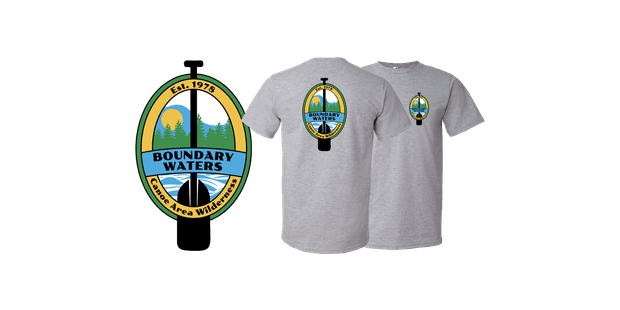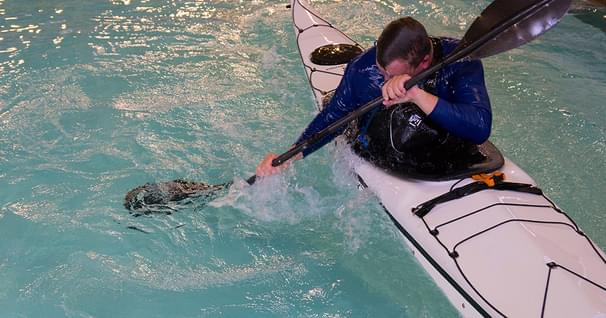Canoe Strokes and Control
I grew up in an area of Canada that is often referred to as canoe country. The landscape is dotted with thousands of lakes and rivers. For thousand of years the natives who've inhabited this region mostly traveled in summer by paddling canoes fashioned from Birch bark skins and Cedar hulls. There are many summer camps in my canoe country and the original guides in these camps were local natives who passed on their skills to successive generations of campers. This video will demonstrate some of those skills.
Hand Placement on Paddle
When you first start to paddle a canoe the natural tendency is to keep your hands far apart on the shaft. That feels like you have more leverage, but that restricts your reach. There are a lot of situations where less effort is needed to get the canoe to do exactly what you want by simply moving the bottom hand farther up the shaft. That extends your reach in the canoe letting you to get a lot more leverage on the craft. This can be extremely useful in situations like turning a canoe into a headwind.
Heeling
Another consideration in reducing the amount of effort in paddling is drag on the hull. When the canoe is sitting up right and the goal is to turn it the canoe needs to move a lot of water. Even though the reach is extended by raising the bottom hand up the shaft it still takes a fair bit of effort to spin the canoe through a full circle. Heeling the canoe by sliding over to the side reduces bottom drag by a lot.
The canoe shape is more rounded this way and the ends come out of the water a bit making for a shorter canoe. A full circle spin requires much less effort.
J-Stroke
When paddling a canoe solo there's a natural tendency for it to shift away from the side that you're paddling on. Steering is accomplished by flicking your wrist at the end and pushing the water away a little bit. That's called a J-Stroke. The J-Stroke has a pause at the end of the power portion during the steering phase that makes it hard to stay in sync with a partner.
Canadian or Guide Stroke
Done often enough though the J-Stroke will usually evolve into a smoother stroke that incorporates steering during the recovery phase. This smoother stroke is often called the Canadian or Guide Stroke. It happens when the leading edge of the paddle, that's the edge of the blade facing the front of the canoe, is turned down more aggressively just before the end of the power portion and steering takes place as the paddle is recovered under water in advance of the next power stroke.
If you're having difficulty getting the feel of this stroke, it can help if you stick out the thumb of the top hand and use it to point at the bottom of the canoe at the end of the power stroke. That helps get the aggressive twist needed for steering.
If you don't feel resistance on the paddle as you recover it the paddle wasn't twisted enough at the end of the stroke because you steer as you recover the paddle for the next power stroke the Guide Stroke or Canadian Stroke helps you keep pace no matter how fast your partner paddles and it requires less effort to keep the canoe going in the direction you want.
~Get the BWCAW Tee~
With over 1,090,000 acres of wilderness area, the BWCAW is a paddler's paradise.
Indian or Box Stroke
Another very useful stroke that keeps the canoe in constant control is called the Indian or Box Stroke. At the end of each power phase the paddle is rotated 180 degrees which means the power phase is opposite for every stroke done.
The important element in this stroke is the fact that the paddle never leaves the water. That means both that it is a very quiet stroke and that the paddler can perform adjustments during the entire stroke.
The key to mastering this stroke is to loosen the grip alternately on the top and bottom hands. As the paddle reaches the end of the power portion the top hand loosens the grip allowing the paddle to be rotated by the bottom hand. As the paddle is recovered under water the lower hand grip is loosened before the paddle reaches the end of the recovery phase. Exactly when all that happens is somewhat dependent on what corrections need to be done.
Most commonly pry adjustments can be included at the end of the power portion and draw adjustments can be added at the end of the recovery portion but this stroke gives the paddler the option of making a wide variety of adjustments throughout the entire duration of the stroke. The name for this stroke comes from aboriginal paddlers who relied on the quietness that resulted from the lack of above water recovery to approach game animals for hunting. Because the paddle is constant contact with the water it's a useful stroke to remain in constant control of the canoe in any challenging situation including white water.
Control is Key!
A good paddler is in complete and constant control of their craft no matter what the circumstances are. In the following sequences my oldest son and I will demonstrate precise control using either a second canoe or a fixed object (like a dock) to build exercises around.
You can get a sense of canoe control in open water, but when you challenge yourself against other objects it quickly becomes apparent if you've mastered the skills or not. Subtle pitch control of the paddle blade is what's required to maintain the constant control necessary for these exercises. Unfortunately most of what happens underwater and it isn't obvious to observer watching from the shore...
Courtesy Rolf Kraiker
Related Articles
By changing how you edge and balance your boat you can increase your stability and adaptability. Using…
Whether you were new to paddling in 2018 or you're an experienced paddler, you can never stop learning.…
Mention “pool session” and the first image that pops into most kayakers minds is a class in how to roll.…
Photo Credit: Darlene Patterson Many people who have paddled for years can't keep a canoe on a straight…




